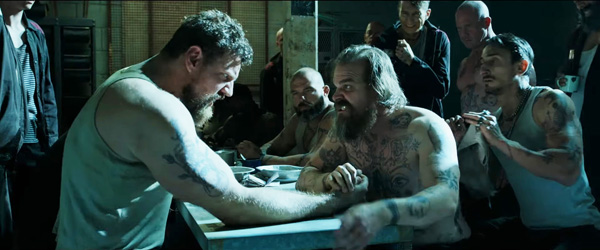
Cinesite completed a neat line-up of VFX shots that add realism to brutal prison sequences and close-up exterior driving shots in ‘Black Widow’, the fourth Marvel film to which Cinesite has contributed visual effects in the past three years, including ‘Avengers: Infinity War’, ‘Antman & The Wasp’ and ‘Avengers: Endgame’. ‘Black Widow’ is a prequel following the events of ‘Captain America: Civil War’.
Natasha Romanoff, known as Black Widow, finds herself alone on the run from the government and forced to confront a dangerous conspiracy with ties to her past. Pursued by a force determined to bring her down, she must deal with her history as a spy and the broken relationships left in her wake before she became an Avenger.
Working under Production VFX Supervisor Geoff Baumann, Cinesite’s work was overseen by VFX Supervisor Ben White. Cinesite’s visual effects for Black Widow, in contrast with the super-heroic effects created for previous Avengers films, are terrestrial.
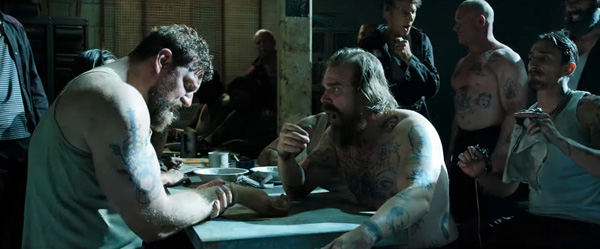
Prison Fight
An action movie from beginning to end, Cinesite’s work involved adding invisible visual effects to fight sequences. A comical but gruesome single VFX shot that Cinesite’s team contributed involves Natasha’s father, the Red Guardian Alexei, who is being held in a squalid Russian prison. Challenged to an arm-wrestling match with a 7ft tall, tough-looking inmate, he easily defeats him, slamming his competitor’s hand down decisively onto the table. As the inmate lifts his hand up, his forearm bends at an unnatural angle.
A combination of CG hand and forearm replacement, as well as 2D re-projection onto geometry was used to blend out of the live action and into the CG limb. The two actors were filmed in close proximity creating lighting interaction between them due to the angled lighting on set, making it necessary to roto-animate Alexei for realistic shadow casting.
Ben said, “We had to rotoanimate both Alexei and his opponent's arm in order to get the lighting and occlusion to work properly. The lighting had to be very detailed and matched closely to the set, and as is always the case, a lot of finessing in compositing was required in compositing to get the elements to come together.”
Glass Sandwich
In a later prison shot, Alexei punches through the laminated glass window of a security booth to grab a guard who has been eating his lunch. The shot was filmed without any glass, with the actor reaching through a window frame to violently grab the stuntman, who was wearing a harness, and yank him through.
Removing the harness was straightforward – the real challenge came when creating the CG glass because laminated glass behaves very differently to the normal kind when it breaks. Toughened glass, like that used in windshields, is sandwiched between flexible plastic sheeting, so when it shatters it behaves more like folding, rigid glassy cloth than conventional glass.
The FX team developed a custom Houdini set up to achieve the effect, taking reference from researched footage. Attention was paid to creating detailed internal fracture patterns within the glass sheet, giving it a white, opaque look.
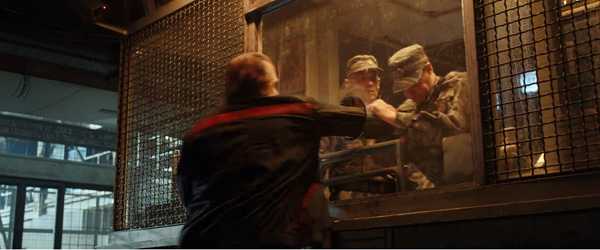
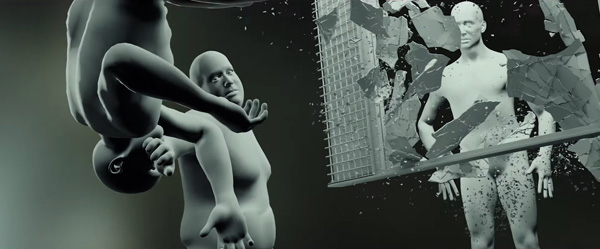
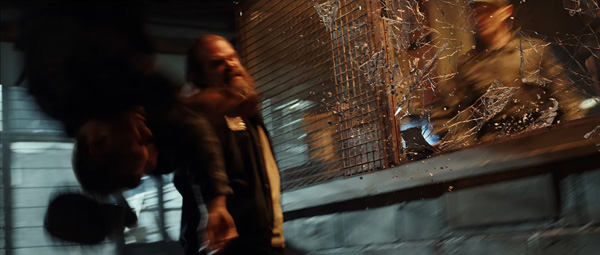
“Instead of dealing with the material in layers – such as plastic sheeting and glass – one simulation using dynamic constraints was involved so that we could control shearing and tearing,” said Ben. “It took a lot of trial and error to get the behaviour working. Different areas of the glass required different values to look right. The initial impact and splitting from the guard’s head hitting it didn't give good results when given similar values to the rest of the panel around the outer edges.
“To control the fracture patterns, we sourced reference photos and video of real glass fractures as a starting point – the FX artist traced these shapes then made variations of them as curves, which were used to slice up the glass geometry.” Beyond the work by the FX and lighting team, compositing was critical to blend the elements together and make the shot seem real.
Other prison shots required the removal of stunt pads on Alexei’s arm by creating an exact CG replica, complete with fine detail in the skin, fine hair and tattoos, that was used to replace the arm in the plates.
On the Motorway
Another subtle visual effects sequence completed at Cinesite takes place when Natasha and Yelena are driving on a motorway at night in a BMW. A very specific model of BMW was required for the sequence, which was not available at the time of filming. Ultimately, the whole exterior of the car is fully CG.
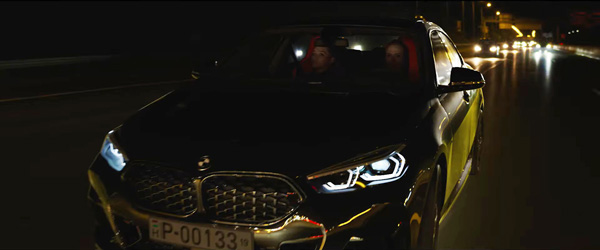
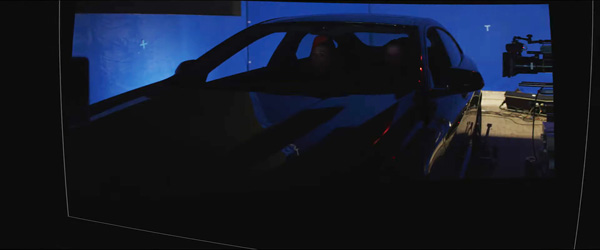
Our VFX team received a high-resolution model of the car as well as CAD data and photography, from which the asset team created a hero CG car completed to a level of detail that would work even in very close up shots looking through the windscreen, where the camera rests just above the car’s bonnet.
The actors were filmed in a full-sized car without windows against blue screen, with giant LED walls projecting interactive lighting onto them from stitched plates. These plates had been shot on a motorway using nine RED cameras attached to a rig. Although it was well shot, substantial manual work was required to stitch the 8K plates together to create a 360-degree environment, which was used to create the reflections and realistic image-based lighting.
“We didn't know for sure where the camera was going to be but we know the kind of coverage dialogue scenes in a car are likely to have,” Ben said. “We also knew there were several exterior hero shots that would be close up – on this basis we put a lot of detail into the car exterior.
Stitching Plates from a Camera Array
“Regarding the background plates, many factors influence the complexity of creating a moving stitched plate from a camera array, including the choice of camera body used and shutter type, the shutter angle and exposure, time of day, the vehicle used to carry the array, the terrain or vehicle path, stabilisation method and length of take.
“Furthermore, the content of the frames is a key factor in how difficult or possible a stitch is going to be. Any objects that stick out towards the cameras can cause issues, and since we solve to a particular depth, there are times when the best solution is to remove problem areas from the frame and replace them with CG or 2.5D elements. So, an open road in the desert would be likely to work pretty well, whereas a city or a tree-lined road can require the replacement of various parts depending on the framing and motion of the camera in the final shot.
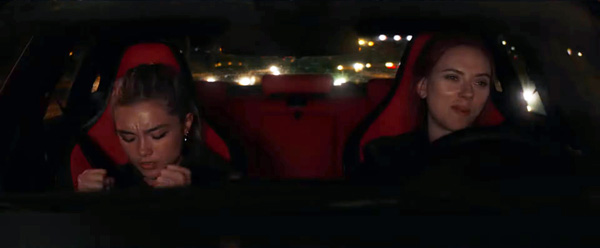
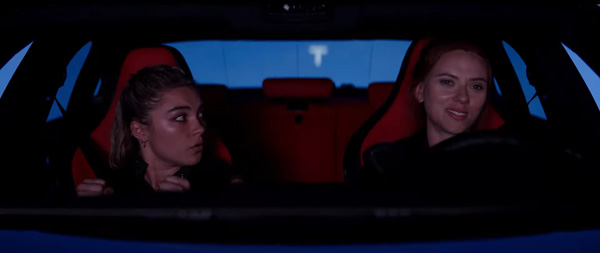
“For Black Widow, we used Foundry Cara VR inside Nuke, but a lot of skillful work was needed by our compositing lead and compositing supervisor to result in usable plates, and the approach varied from shot to shot. The wide exteriors needed much more work than the tighter shots of the actors in the car.”
Tracked Cards
In one establishing shot early in the same sequence with Natasha and Yelena, the plate had been filmed locked off, but the director later felt that a more dynamic shot would work better. Cinesite added a fully CG car to allow the camera to drift up to the actors, placing the locked off plate inside the rigged car as a card and tracking it to the vehicle’s motion as it drives into the shot. Careful animation was needed to ensure the 2D element with the actors did not move outside the camera vector and become distorted.
“The end framing had to be lined up with the plate of the actors in the car, so we worked backwards from that position. Since the actors are now on 2D cards in a CG car, you can only move them back a limited distance before the perspective breaks down. We had the car go back as far as possible and then drive up to the camera from there.”
Cinesite’s team also contributed shots with a CG helicopter interior, action shots with CG weapons and various composites. www.cinesite.com


















